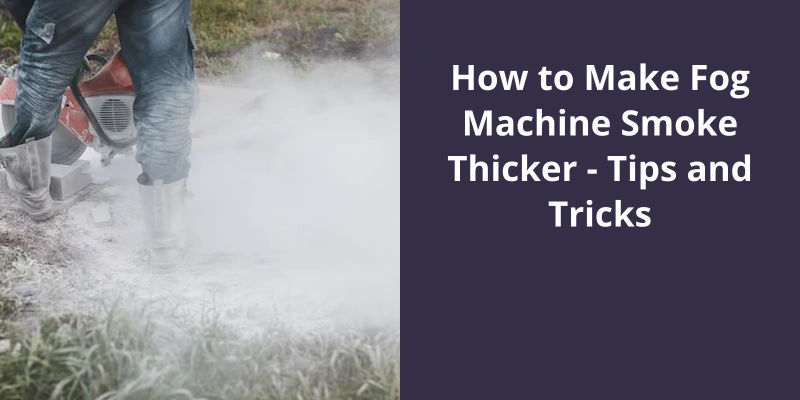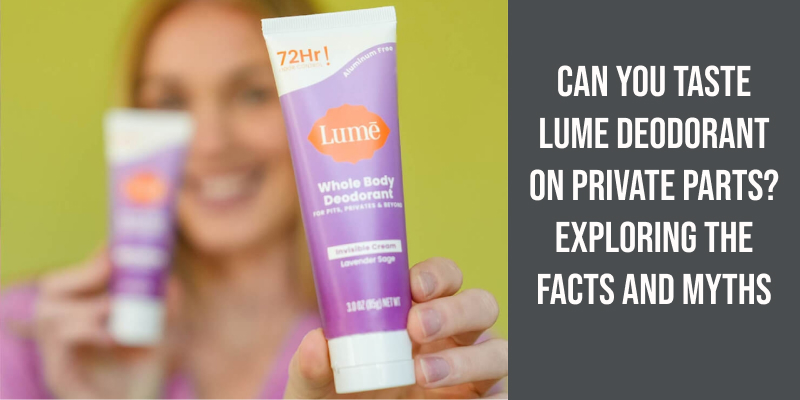To make the smoke from a fog machine thicker, you need to cool the fog, as cooler temperatures help in increasing the density of the smoke, together resulting in thicker fog. One effective way is using a fog chiller which can be bought or even homemade by placing dry ice in a cooler and allowing the fog to pass over it. Another strategy is to experiment with different types of fog juice, as certain types of fog fluids may produce thicker fog than others; just make sure to use the juice compatible with your machine. It’s also crucial to maintain your fog machine properly by cleaning it as the manufacturer advises because a dirty machine could lead to less dense fog. Lastly, to create a better effect, the surrounding environment plays a part: if the area is too warm or has too much airflow, it can thin out the fog, so control these where possible.

Can You Use Any Fog Juice in a Fog Machine?
Different fog machines require different kinds of fog juice to operate effectively. Mixing or using the wrong kind of fog juice can damage or even destroy your machine.
It’s also important to note that not all fog juice brands are created equal. Different brands may have variations in their composition, such as the chemicals used to create the fog effect or the type of water or oil used as a base. Some brands may produce a thicker or denser fog than others, and some brands may be more suitable for use in certain types of fog machines.
If you’re using the fog for visual effects such as in a theatrical production or haunted house, you may want to use a denser fog juice that will give a more opaque effect. However, if you’re using the fog for atmospheric purposes such as in a concert or event, you may want to use a lighter fog that will dissipate more quickly.
Regularly cleaning your machine and using the correct fog juice will ensure that it operates safely and effectively. It’s recommended that you follow the manufacturers instructions for cleaning and maintenance to avoid damage or injury.
Alternatives to Traditional Fog Juice, Such as Water-Based or Biodegradable Options.
- Water-based fog fluids
- Biodegradable fog fluids
- Vegetable-based fog fluids
- Mineral oil-based fog fluids
- High-density fog fluids
- Low-lying fog fluids
- Dry ice
- Cryo effects
- Bubble machines
- Haze machines
Creating heavy fog can be a useful effect for a variety of purposes, from theatrical productions to Halloween decorations. One way to achieve this effect is by making your own “fog juice” using a simple solution of glycerin and water. By heating the solution to the point of evaporation, dense vapor is created, which can be released into a room or setting to create a cloudy, atmospheric effect. Here are a few tips on how to create heavy fog that will add the perfect touch to your next event.
How Do You Make Heavy Fog?
But how do you turn this simple recipe into a thick, heavy fog that can transform any room into a mysterious and eerie atmosphere? The key is to use the right machine. There are two main types of fog machines: thermal and ultrasonic. Both types have their advantages and disadvantages, but for heavy fog, it’s best to go with a thermal machine.
Once you’ve your machine, it’s important to set it up correctly. Place the fog machine in a well-ventilated area, preferably with a fan or open window to help disperse the fog. Next, fill the machine with your fog juice and let it warm up for at least 5-10 minutes before using. This will ensure that the fog is at it’s thickest and most consistent.
When youre ready to start creating your heavy fog, it’s important to use the machine strategically. Dont just turn it on and let it run continuously – this will quickly fill the room with thin, wispy fog that won’t create the desired effect. Instead, use short bursts of fog to create pockets of density throughout the room. This will create a more mysterious and unsettling atmosphere, as the fog seems to move and shift mysteriously around the space.
If you want to take your fog effects to the next level, consider adding some lighting. Colored lights can create a sinister or otherworldly atmosphere, while strobe lights can give the impression of lightning flashes or camera flashes. It’s important to experiment with different lighting setups and fog densities to find the perfect balance for your needs.
Creating heavy fog requires a bit of preparation and technique, but with the right tools and approaches, you can transform any space into a creepy, mysterious world of your own creation. Experiment with different machines, juice recipes, and lighting effects to create your perfect foggy ambiance.
Different Types of Fog Fluid and Their Effects on Fog Density and Consistency.
- Regular fog fluid: Creates a light, hazy effect with low density and consistency.
- Heavy fog fluid: Creates a thick, dense fog with high density and consistency.
- Low-lying fog fluid: Creates a ground-hugging fog with high density and consistency.
- UV-reactive fog fluid: Creates a fog that glows under black light with low density and consistency.
- Scented fog fluid: Adds a pleasant aroma to the fog with variable density and consistency.
Now that you know the ideal glycerin percentage range for thickening your fog fluid, it’s time to mix it. But before you dive in, you need to be careful not to add too much glycerin as it can affect the fog’s density. In this article, we will explore some effective ways to mix the right amount of glycerin and create the perfect fog for your needs.
How Do You Thicken Fog Fluid?
One method of thickening fog fluid is by mixing glycerin, which is commonly used as a thickening agent in a variety of products. However, it’s important to note that adding too much glycerin to the fluid can actually prevent fog from forming altogether, so it’s important to find the right balance. The ideal concentration of glycerin in fog fluid is usually somewhere between 15 and 35 percent, but this may vary depending on the specific type of fluid and the desired effect.
For best results, start by pouring a small amount of glycerin into the fluid and stirring it thoroughly, then continue adding small amounts until you reach the desired consistency. Some people may find that adding warm water to the mix can help to dissolve the glycerin more easily.
One common additive is distilled water, which can help to increase the volume of the fluid without affecting it’s consistency. Other substances that may be effective include propylene glycol, ethylene glycol, and even vodka.
Whether youre creating a spooky Halloween display or producing a theatrical performance, a thick, dense fog can add a dramatic and immersive element to your production. With the right methods and a little experimentation, achieving the perfect fog effect is well within your reach.
Tips for Achieving Specific Fog Effects in Different Settings (e.g. Outdoor vs. Indoor)
- Use dry ice for outdoor fog effects
- Try a fog machine for indoor settings
- Position your fog source to create desired effect (e.g. low to the ground for eerie atmosphere)
- Use colored lighting to enhance the fog effect (e.g. blue or green for a mysterious vibe)
- Avoid overusing fog, as it can obscure vision and create safety concerns
Source: How to Make Fog-Machine Fluid – Sciencing
Now that we know the ingredients that make up fog fluids, it’s important to understand how these chemicals interact with the machine to create a fog effect. The science behind this process may seem complicated, but with the right information, anyone can create a stunning fog effect for their next event or production. Let’s dive deeper into how fog machines work and how to choose the right one for your needs.
What Chemicals Make Fog?
Fog machines have been around for decades now, becoming a staple element in the entertainment industry. Be it a rock concert, music video, or dance party – fog machines are everywhere. Without it, the visuals of the performances would fall flat, and there would be no exciting atmosphere. But have you ever wondered what goes into making the thick, misty fog that adds drama and excitement?
The primary ingredients that go into making fog fluid are propylene glycol, triethylene glycol, glycerin, or a combination of these. These chemicals are heated until they reach their vaporization point. Then, they’re forced out of the machines nozzle under pressure, creating the plumes of fog that we see.
Propylene glycol is one of the most popular chemicals used for fog-making because of it’s low toxicity and pleasant smell. It’s also commonly used in food, pharmaceuticals, and cosmetics, making it a safe and familiar ingredient. Triethylene glycol, on the other hand, is known for it’s ability to produce dense, long-lasting fog. It’s also used in antifreeze and deodorants. Glycerin, the third chemical used in fog fluids, is also found in food, medicines, and cosmetics, making it another safe and popular ingredient.
While all three chemical ingredients have different vaporization temperatures, the process of heating them is the same. Fog machines have a heating element that heats the fluid until it evaporates, creating a water vapor that resembles fog. The pressure from the machine then sprays the vapor, creating a dense and opaque mist.
However, it’s worth noting that excessive exposure to fog fluid can cause mild irritations such as a sore throat, coughing, and increased mucus production. That’s why fog machines should only be used in well-ventilated areas, and people should avoid inhaling the fog directly.
These ingredients have different vaporization temperatures, which means that different fog machines are required to use the fluid correctly. While fog machines create stunning visual effects, people should use caution when handling them to avoid any health hazards. Ultimately, fog machines are a necessary part of the entertainment industry, making performances more thrilling and visually striking.
Conclusion
In conclusion, making fog machine smoke thicker is all about experimentation and finding the right combination of ingredients. Whether it's using glycerin or distilled water, adjusting the fog machine's settings, or using a different type of fog juice, there are many different approaches you can take to achieve the thick, billowy fog effects that you're looking for. At the end of the day, it's all about finding what works best for your specific needs and venue, so don't be afraid to try new things and see what works. With a little bit of trial and error, you'll be well on your way to creating stunning special effects that captivate and amaze your audience.





